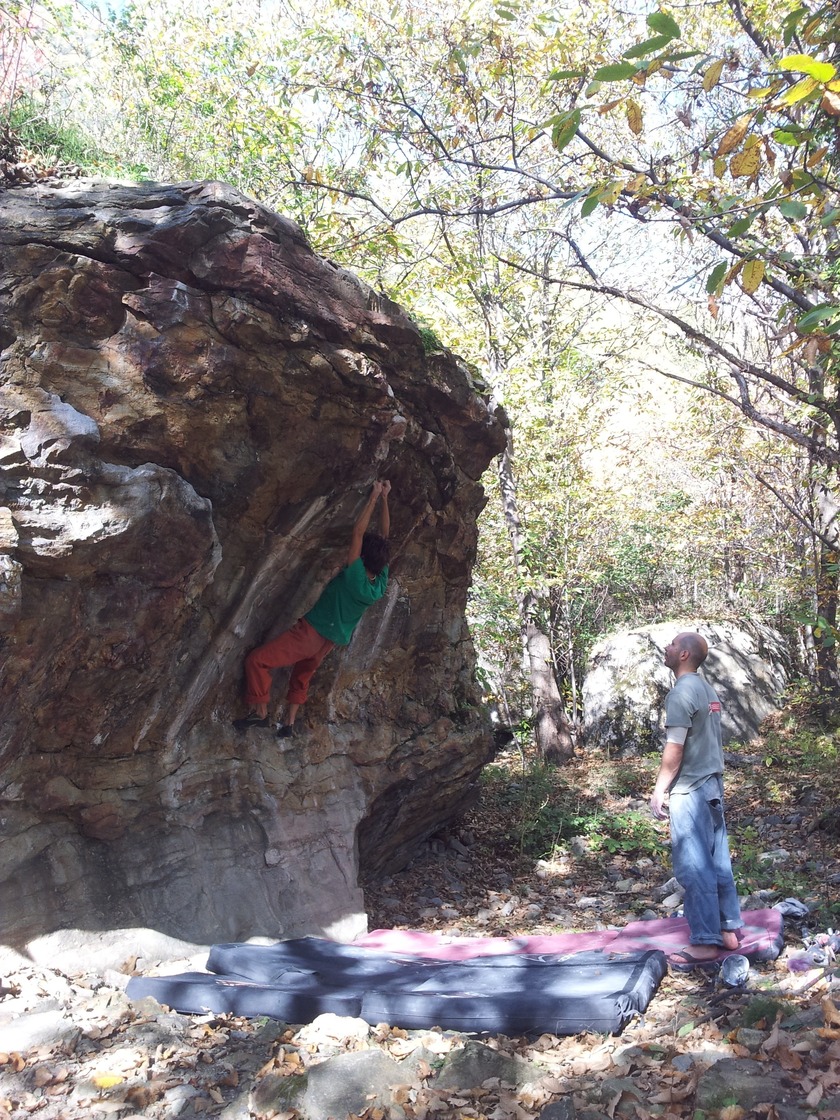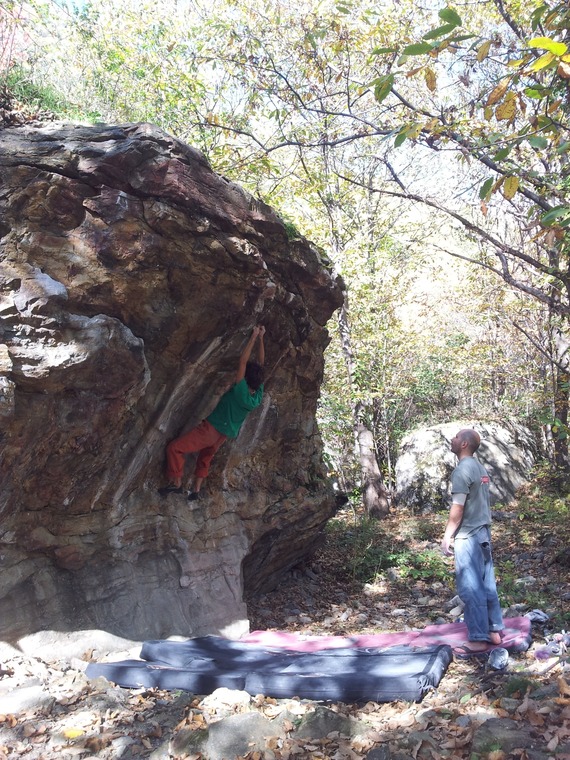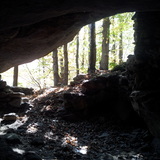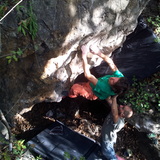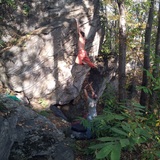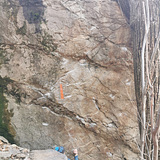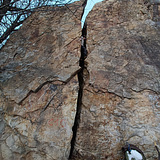☀️SUN DURING THE DAY: from morning to afternoon, the sector is located on the sunny face of the mountain. During spring and summer most of the boulders are shaded by large chestnut trees.
🧭EXPOSURE: Mainly S, sun from E to W.
📆BEST PERIOD: October - May.
During winter it's probable to find snow on the boulders.
👪FAMILY FRIENDLY: yes, in this place there are some pic nic areas and most of the boulders have an easy and safe approch
📱PHONE SIGNAL: YES
🇮🇹
L'area comprende centinaia di blocchi di gneiss fine e quarzite accatastati a causa di gigantesche frane avvenute in epoche antiche. Il sito boulder si sviluppa esattamente all'interno di un'area archeologica di grande interesse, al confine tra la bassa e l'alta val di Susa. Si possono trovare innumerevoli tipologie di appigli e passaggi: da tetti con tacche nette a placche tecniche, fino a spigoli svasi.
Sfortunatamente, negli anni questo splendido settore ha perso parecchio pubblico a causa dell'installazione del cantiere per la TAV nelle strette vicinanze. Da qualche anno, a seguito di numerosi scontri tra la comunità "no TAV" e i militari a controllo del cantiere, la zona è diventata molto più controllata. Per accedere al settore, è richiesta una semplice identificazione da parte dei carabinieri, in modo che siano a conoscenza di chi si trova al momento all'interno della zona. Durante i periodi invernali, inoltre, è richiesto di uscire dalla zona entro le ore 20. La possibilità e gli orari di accesso a questo settore sono vincolati dalla gravità della situazione legata alla questione TAV. Tuttavia, ciò non deve assolutamente scoraggiare la voglia di scoprire questo fantastico settore, sicuramente uno tra i più storici delle valli torinesi.
🇬🇧
The area comprises hundreds of blocks of fine gneiss and quartzite stacked due to massive landslides that occurred in ancient times. The bouldering site is located precisely within an archaeological area of great interest, on the border between the lower and upper Susa Valley. Countless types of holds and passages can be found, from roofs with sharp notches to technical slabs and flared edges.
Unfortunately, over the years, this splendid sector has lost a considerable audience due to the installation of the construction site for the TAV in the nearby vicinity. For some years now, following numerous clashes between the "no TAV" community and the military in control of the construction site, the area has become much more controlled. To access the sector, a simple identification by the carabinieri is required, so they are aware of who is currently within the zone. Additionally, during winter periods, it is required to leave the area by 8:00 PM.
The possibility and access times to this sector are constrained by the seriousness of the situation regarding the TAV issue. However, this should absolutely not discourage the desire to discover this fantastic sector, certainly one of the most historic in the Turin valleys.
🇩🇪
Das Gebiet umfasst Hunderte von Blöcken feinen Gneis und Quarzit, die aufgrund massiver Erdrutsche in der Antike gestapelt sind. Der Boulder-Bereich befindet sich genau innerhalb eines archäologisch interessanten Gebiets an der Grenze zwischen dem unteren und oberen Susa-Tal. Es gibt unzählige Arten von Griffen und Passagen: von Dächern mit scharfen Einkerbungen bis zu technischen Platten und abgeschrägten Kanten.
Leider hat dieser herrliche Sektor im Laufe der Jahre aufgrund der Installation der Baustelle für die TAV in unmittelbarer Nähe ein beträchtliches Publikum verloren. Seit einigen Jahren ist die Gegend infolge zahlreicher Zusammenstöße zwischen der "no TAV"-Gemeinschaft und den Militärs, die die Baustelle kontrollieren, viel stärker kontrolliert. Um auf den Sektor zuzugreifen, ist eine einfache Identifikation durch die Carabinieri erforderlich, damit sie darüber informiert sind, wer sich derzeit in der Zone aufhält. Außerdem muss während der Winterperioden die Zone bis 20:00 Uhr verlassen werden.
Die Möglichkeit und die Zugangszeiten zu diesem Sektor sind durch die Ernsthaftigkeit der Situation im Zusammenhang mit der TAV-Frage eingeschränkt. Dies sollte jedoch keineswegs den Wunsch entmutigen, diesen fantastischen Sektor zu entdecken, der sicherlich zu den historischsten in den Tälern von Turin gehört.
🇫🇷
La zone comprend des centaines de blocs de gneiss fin et de quartzite empilés en raison de glissements de terrain massifs survenus dans des temps anciens. Le site de blocs se développe précisément à l'intérieur d'une zone archéologique d'un grand intérêt, à la frontière entre la basse et la haute vallée de Susa. On y trouve d'innombrables types de prises et de passages : des toits avec des encoches nettes aux dalles techniques, jusqu'aux arêtes évasées.
Malheureusement, au fil des ans, ce splendide secteur a perdu beaucoup de son public en raison de l'installation du chantier de la TAV à proximité. Depuis quelques années maintenant, à la suite de nombreux affrontements entre la communauté "no TAV" et les militaires en charge du chantier, la zone est devenue beaucoup plus contrôlée. Pour accéder au secteur, une simple identification par les carabinieri est requise, afin qu'ils soient informés de la présence de ceux qui se trouvent actuellement dans la zone. De plus, pendant les périodes hivernales, il est exigé de quitter la zone avant 20h00.
La possibilité et les horaires d'accès à ce secteur sont contraints par la gravité de la situation liée à la question de la TAV. Cependant, cela ne doit absolument pas décourager le désir de découvrir ce secteur fantastique, certainement l'un des plus historiques des vallées turinoises.
🇮🇹
L'area boulder di Chiomonte ha origini nel 1983 come sito archeologico con la scoperta di reperti che hanno permesso di comprendere le strategie insediative dell'uomo preistorico nella Valle di Susa. Attualmente, i reperti sono conservati presso il Museo Archeologico di Torino e il Museo di Chiomonte.
Negli anni '90, sono stati chiodati i primi massi, inizialmente pochi e soprattutto i più alti. Successivamente, alcuni local Valsusini, come Bianchi, Leoncini e Vighetti, hanno iniziato la vera pulizia dei blocchi, scoprendo un enorme potenziale. Dalla fine degli anni '90, dopo quasi due anni di scarsa attività, l'area è stata riscoperta e valorizzata, soprattutto nei mesi più freddi, da Marzio Nardi insieme ai ragazzi del Bside Climbing School. Hanno organizzato i primi raduni in collaborazione con il comune di Chiomonte, non solo per scalare ma soprattutto per pulire e aprire nuovi passaggi.
Purtroppo, è stato creato un cantiere per la costruzione di una ferrovia ad alta velocità (TAV) proprio in questa zona, portando a seri scontri tra la polizia e i manifestanti che occupavano l'area per impedire ai lavori di procedere. Ciò ha causato la chiusura del settore a partire dal 2011, fino a quando nel 2016 è stato riaperto con accesso regolamentato e registrazione degli ingressi da parte dei carabinieri. Ad oggi, il settore è frequentato da arrampicatori di tutti i livelli e, nonostante la sua lunga storia, possiede ancora il potenziale per l'apertura di nuove linee.
🇬🇧
The bouldering area of Chiomonte has its origins in 1983 as an archaeological site with the discovery of artifacts that allowed an understanding of the settlement strategies of prehistoric humans in the Susa Valley. Currently, the artifacts are preserved at the Archaeological Museum of Turin and the Chiomonte Museum.
In the '90s, the first boulders were bolted, initially few and mostly the highest ones. Subsequently, some local climbers from Valsusa, such as Bianchi, Leoncini, and Vighetti, began the actual cleaning of the blocks, uncovering enormous potential. From the late '90s, after almost two years of limited activity, the area was rediscovered and enhanced, especially in the colder months, by Marzio Nardi along with the Bside Climbing School team. They organized the first gatherings in collaboration with the municipality of Chiomonte, not only for climbing but also for cleaning and opening new passages.
Unfortunately, a construction site for a high-speed railway (TAV) was established right in this area, leading to serious clashes between the police and protesters who occupied the area to prevent the work from proceeding. This resulted in the closure of the sector from 2011 until it was reopened in 2016 with regulated access and registration of entries by the Carabinieri. Today, the sector is frequented by climbers of all levels and, despite its long history, still holds the potential for opening new lines.
🇩🇪
Das Boulder-Gebiet von Chiomonte hat seine Ursprünge im Jahr 1983 als archäologische Stätte mit der Entdeckung von Artefakten, die ein Verständnis der Siedlungsstrategien prähistorischer Menschen im Susa-Tal ermöglichten. Derzeit werden die Artefakte im Archäologischen Museum von Turin und im Museum von Chiomonte aufbewahrt.
In den 90er Jahren wurden die ersten Felsen eingebohrt, anfangs wenige und vor allem die höchsten. Später begannen einige lokale Kletterer aus Valsusa, wie Bianchi, Leoncini und Vighetti, mit der eigentlichen Reinigung der Blöcke und entdeckten ein enormes Potenzial. Ab Ende der 90er Jahre, nach fast zwei Jahren geringer Aktivität, wurde das Gebiet vor allem in den kälteren Monaten von Marzio Nardi zusammen mit den Schülern der Bside Climbing School wiederentdeckt und gefördert. Sie organisierten die ersten Treffen in Zusammenarbeit mit der Gemeinde Chiomonte, nicht nur zum Klettern, sondern auch zum Reinigen und Öffnen neuer Passagen.
Leider wurde direkt in diesem Bereich eine Baustelle für eine Hochgeschwindigkeitsbahn (TAV) eingerichtet, was zu schweren Auseinandersetzungen zwischen der Polizei und Demonstranten führte, die das Gebiet besetzt hielten, um die Arbeiten zu verhindern. Dies führte zur Schließung des Sektors ab 2011, bis er 2016 mit reguliertem Zugang und Erfassung der Einträge durch die Carabinieri wiedereröffnet wurde. Heute wird der Sektor von Kletterern aller Niveaus besucht und besitzt trotz seiner langen Geschichte immer noch das Potenzial, neue Routen zu eröffnen.
🇫🇷
La zone de blocs de Chiomonte trouve son origine en 1983 en tant que site archéologique avec la découverte d'artefacts permettant de comprendre les stratégies d'implantation des hommes préhistoriques dans la vallée de Suse. Actuellement, les artefacts sont conservés au Musée archéologique de Turin et au Musée de Chiomonte.
Dans les années 90, les premiers blocs ont été équipés, initialement peu nombreux et surtout les plus hauts. Par la suite, certains grimpeurs locaux de Valsusa, tels que Bianchi, Leoncini et Vighetti, ont entrepris le nettoyage réel des blocs, découvrant un énorme potentiel. À la fin des années 90, après presque deux ans d'activité limitée, la zone a été redécouverte et mise en valeur, surtout pendant les mois les plus froids, par Marzio Nardi avec les élèves de l'école d'escalade Bside. Ils ont organisé les premières rencontres en collaboration avec la municipalité de Chiomonte, non seulement pour grimper, mais aussi pour nettoyer et ouvrir de nouveaux passages.
Malheureusement, un chantier pour la construction d'une ligne ferroviaire à grande vitesse (TAV) a été créé précisément dans cette zone, entraînant des affrontements sérieux entre la police et les manifestants qui occupaient la zone pour empêcher les travaux de progresser. Cela a entraîné la fermeture du secteur à partir de 2011, jusqu'à sa réouverture en 2016 avec un accès réglementé et l'enregistrement des entrées par les carabiniers. Aujourd'hui, le secteur est fréquenté par des grimpeurs de tous niveaux et, malgré sa longue histoire, il conserve encore le potentiel d'ouvrir de nouvelles voies.


